
Trash Trapping Program
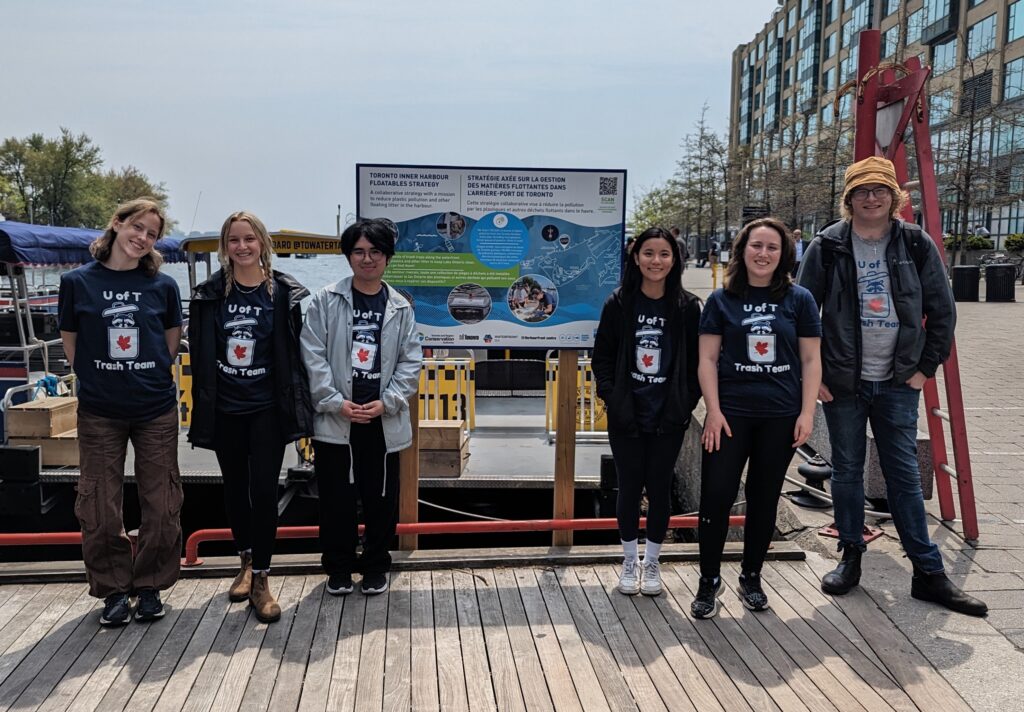
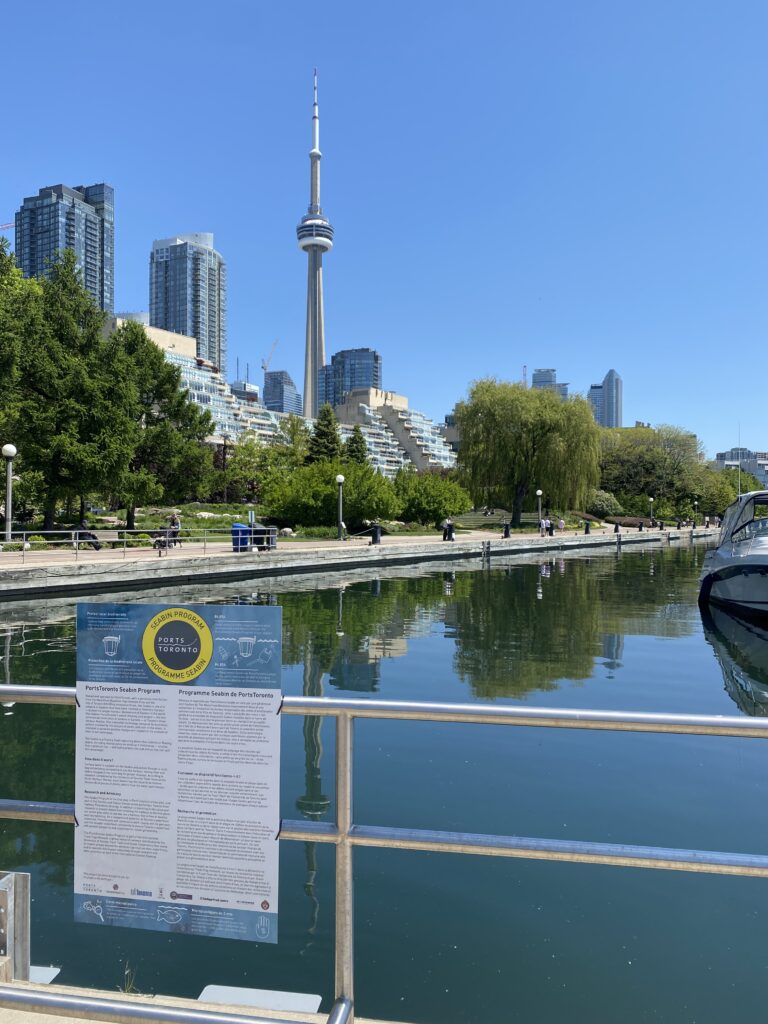
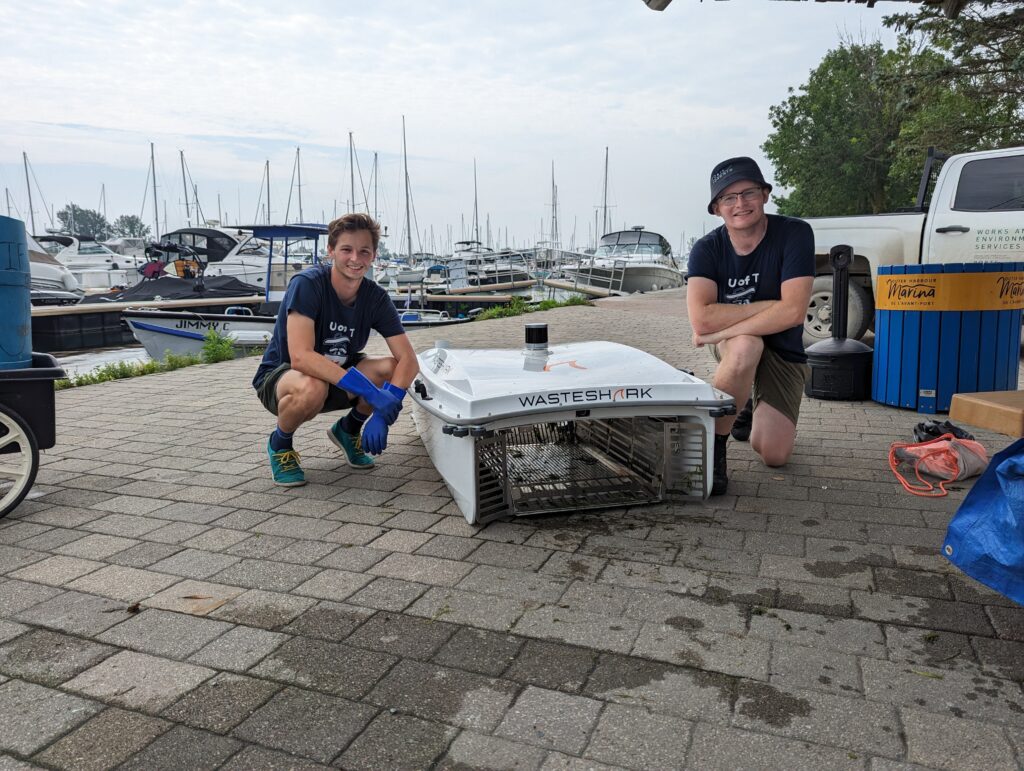
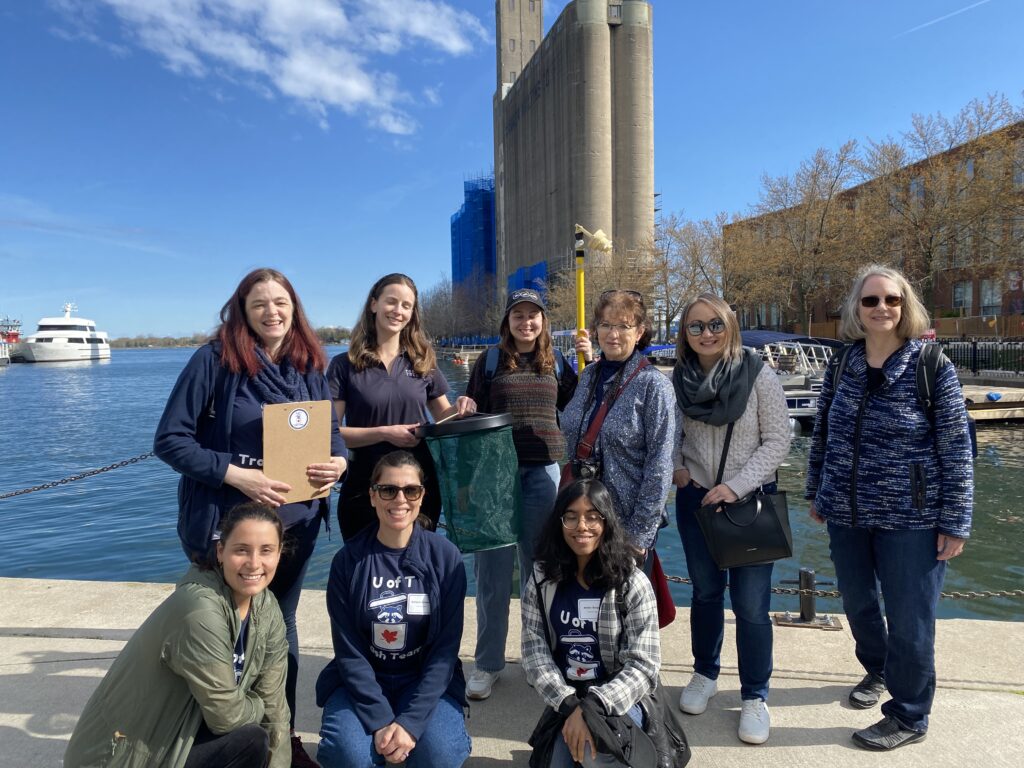
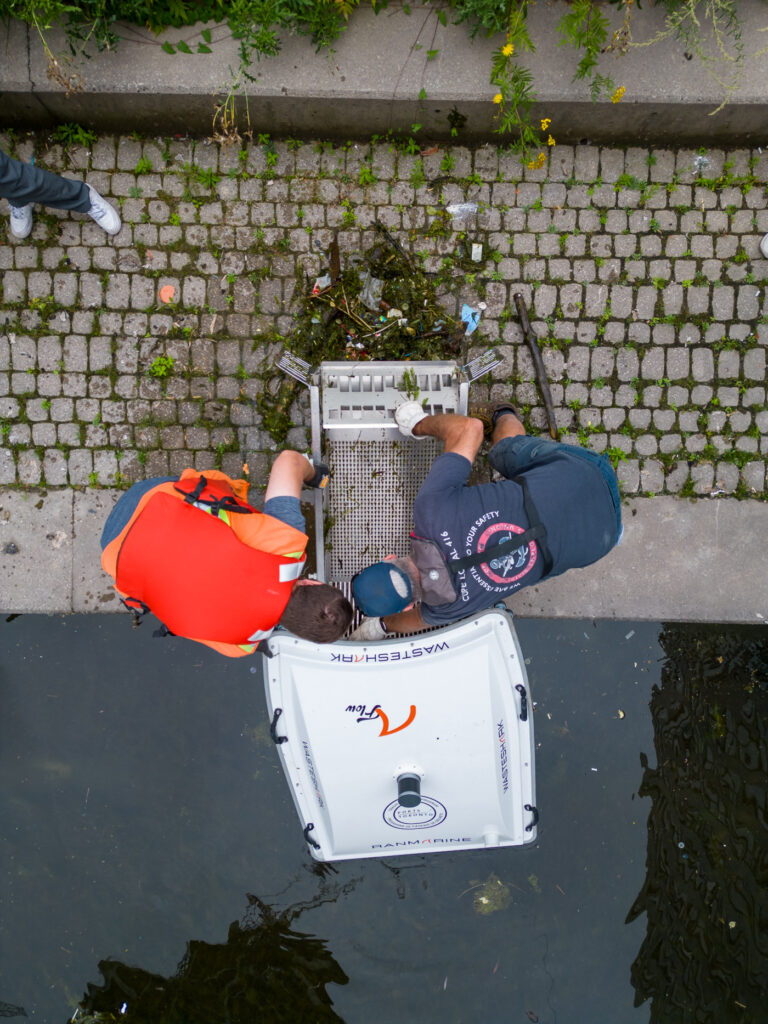
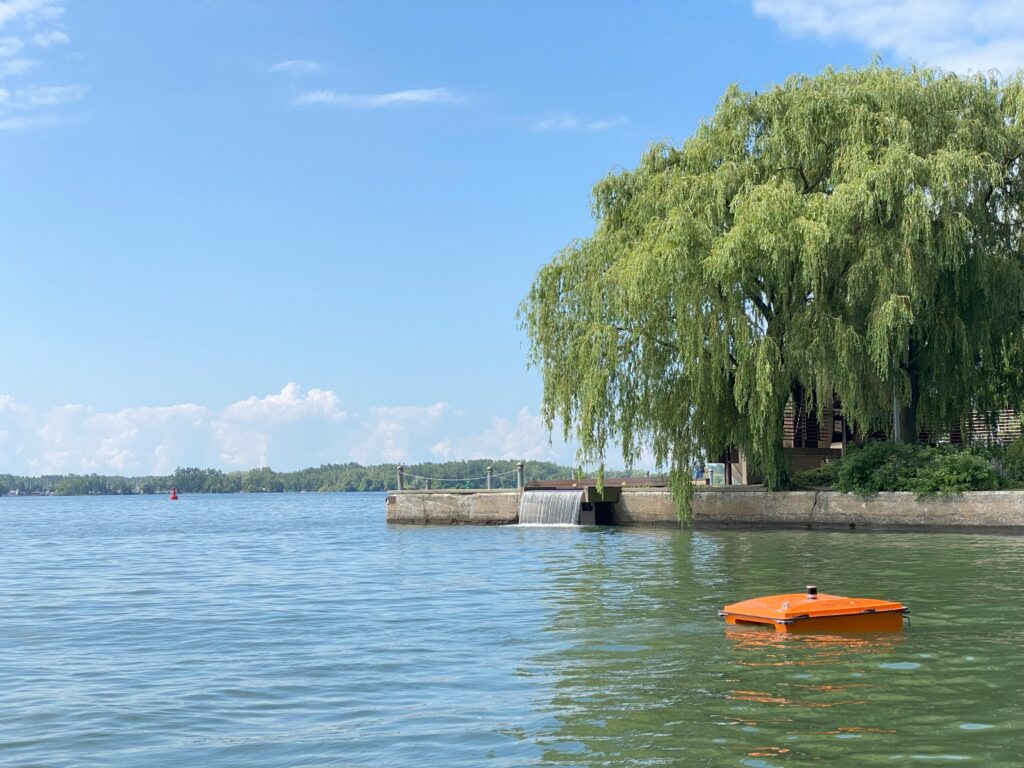
The PortsToronto Trash Trapping Program employs trash trapping technology and solutions-based research to tackle plastic pollution and protect Toronto’s waters for future generations. It is led by PortsToronto and the U of T Trash Team, in partnership with the Waterfront Business Improvement Area (WBIA) and the City of Toronto BIA Office Innovation Grant, Nieuport Aviation, the Toronto Zoo, Harbourfront Centre and Toronto and Region Conservation Authority (TRCA).
The PortsToronto Trash Trapping Program is part of the Toronto Inner Harbour Floatables Strategy, a partnership led by TRCA, and of the International Trash Trapping Network, an initiative led by the U of T Trash Team and Ocean Conservancy, and has influenced the launch of similar trash trapping and data collection programs throughout the Great Lakes and beyond.
Fast Facts
- Researchers estimate that 10,000 metric tonnes of waste enter the Great Lakes each year, much of it plastic.
- A common occurrence in urban waterways, floating debris comes from a variety of sources – including overflowing or windblown trash bins at the water’s edge, storm water runoff and industry.
- Anthropogenic (originating from human activity) debris, and microplastics in particular can harm wildlife and contaminate drinking water, and negatively impact public enjoyment of cherished shared water resources.
- Since the Trash Trapping Program’s launch in summer 2019, Seabins in the PortsToronto network have removed hundreds of thousands of pieces of plastic debris from the Toronto Harbour, moving the needle toward cleaner water in Lake Ontario.
- 5 PortsToronto Seabins are deployed on the Toronto waterfront and on the Outer Harbour Marina.
- In 2023, PortsToronto launched a pilot program with two WasteShark aquadrones, known as the Toronto WasteSharks, Ebb and Flow.
- The WasteShark aquadrone is designed to skim the surface of the water to collect floating debris and waste from the aquatic environment.
Research Partnership with the University of Toronto Trash Team
To quantify our impact and inform policy, PortsToronto partners with the University of Toronto Trash Team on research, education and outreach led by Dr. Chelsea Rochman, Assistant Professor of Ecology and Evolutionary Biology alongside Trash Team co-founders Susan Debreceni and Dr. Rafaela Gutierrez.
As part of this collaborative initiative, researchers from the Rochman Lab collect and analyze the anthropogenic debris including plastics and microplastics captured by the Seabins to determine the origination of some of these materials. This process will, in turn, better inform the Trash Team’s solutions-based research and community outreach program, which ultimately seeks to increase waste literacy and prevent plastics and microplastics from entering waterways in the first place.
Research Results
Between May and October 2024, a network of trash traps in the Toronto Harbour diverted more than 600-kg of anthropogenic (man-made) debris from the waters of Lake Ontario, including items such as plastic pellets, pieces of foam from food containers and construction activities, plastic bottle caps, cigarette butts, fatbergs1, and more than 100,000 small pieces of plastic.
Key Results and Findings in 2024:
Waste Diversion by Weight
- A total of 642 kg of waste was diverted from the environment.
Waste Diversion by Numbers
Large items collected: 53,886
- Top 10 large items collected: Foam, cigarette butts, tobacco products (i.e. cigar tips), plastic bottle caps, large plastic fragments, food wrappers, large plastic film, straws and stirrers, plastic bags, plastic beverage bottles.
Small items collected: 174,251
- Top small items collected: plastic fragments, foam, pellets, film, other.
- Tiny debris (including microplastics or items smaller than 5mm) remain the most common type of collected waste. Plastic breaks down into microplastics over time in the water, making it difficult to trace origins.
Seabins:
- Five Seabins operated on the Toronto Waterfront and two at the Outer Harbour Marina. These Seabins trap floating debris in a catch bag that is emptied daily.
WasteShark Aquadrones
- These drones can remove up to 180 liters of marine litter per trip. In 2024, they collected 163 large pieces of debris (5.9 kg total) during 12 trips.
LittaTraps:
- Ten LittaTraps were placed in storm drains near Queens Quay to prevent debris from reaching the harbour. They mainly captured cigarette butts, paper, and litter that could eventually break down into microplastics.
This research by the U of T Trash Team confirms the important role trash trapping technology can play in capturing floating plastics and microplastics in the water. In addition to increasing waste literacy among the public, the U of T Trash Team’s work to characterize and quantify litter diverted by trash trapscan serve to inform policies that mitigate plastic pollution and protect the wildlife and people of the Great Lakes. Since the Trash Trapping Program’s launch in summer 2019, trash traps in the PortsToronto network have removed hundreds of thousands of pieces of plastic debris from the Toronto Harbour, moving the needle toward cleaner water in Lake Ontario.
These efforts represent significant steps in improving water cleanliness and reducing marine litter along Toronto’s waterfront. To keep up to date with the Trash Trapping Program in 2025 and beyond, follow us on social media at @PortsToronto, @UofTTrashTeam and @Sharks_TO.
Background
In an effort to combat and study plastic pollution in Toronto waterways, PortsToronto launched its award-winning Seabin Program in 2019 at the Outer Harbour Marina and at Pier 6 on Toronto’s waterfront. The Seabin is a floating trash bin that acts like a vaccum, collecting plastic debris as small as two millimetres as well as hydrocarbons like fuel and oil with the help of a filtration pad.
Project partners, the University of Toronto Trash Team, count and characterize the materials captured by PortsToronto Seabins in order to further understand the origination of floating plastic and litter in the Toronto Harbour, and to inform technological and behavioural solutions to prevent these materials from entering Lake Ontario in the first place.
In 2022, the program expanded to new locations in the Toronto Harbour and explored the use of new technology for tackling floating waste, including an engineering design study in partnership with the University of Toronto aimed to create a bespoke trash-trapping device for Toronto’s unique waterways.
In 2022, the program was rebranded as the PortsToronto Trash Trapping Program in an effort recognize the increased scope of the program and new tactics employed.
In summer 2023, PortsToronto launched a pilot project in the Toronto Harbour that saw two new WasteShark aquadrones join its network of Seabins in capturing floating debris and small plastic pollution from the surface of the water.
The Program has been recognized by the Canadian Public Relations Society (CPRS) with a Gold National Award of Excellence, and with the Robert Eaton Environmental Award of Excellence. It has been featured on several broadcast, print and online publications, including the PBS Newshour documentary The Plastic Problem and La terre en nous, a series airing on Canada’s leading First Nations broadcast outlet APTN.
The Toronto WasteSharks names (Ebb and Flow) were chosen through a public contest and vote.
Based out of the Outer Harbour Marina, the WasteSharks troll problem areas for debris collection throughout the Toronto Harbour and waterfront, collecting debris and contributing to important data collection as part of PortsToronto’s research partnership with the University of Toronto Trash Team and their International Trash Trap Network. Follow along on social media under @Sharks_TO on Twitter and Instagram.
The Seabin moves up and down with the natural flow of water, collecting all floating debris. Water is sucked in from the surface and passes through a catch bag inside the Seabin, with a submersible water pump capable of displacing 25,000 LPH (litres per hour), plugged directly into 110/22V outlet. The water is then pumped back into the marina, leaving litter and debris trapped in the catch bag to be disposed of properly. Just one Seabin can collect an estimated 3.9 kilograms of debris in a day, filtering as much as 1.4 metric tonnes of trash in one year.
The WasteShark is an aqua drone. It can operate both manually and by remote control and can be programmed to operate autonomously along a prescribed route for up to six hours, collecting floating debris, small plastic pollution and vegetation from the water. Operating like a Roomba vaccum, Wastesharks skim the surface of the water, filtering it through a catch basin and net that captures the floating waste. With a 180-litre capacity, each WasteShark can collect and remove 1100-lbs of waste daily from the aquatic environment.